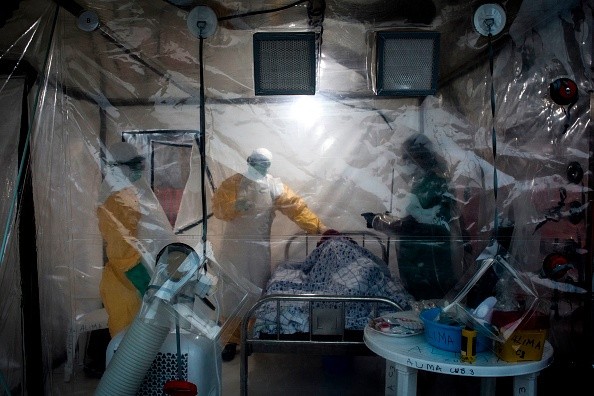The World Health Organization (WHO) has confirmed that an Ebola outbreak in Uganda results from the Sudan virus.
Ebola virus disease (EVD) is a rare but serious disease caused by Ebola virus infection. The virus is known to have five strains. Four of them have an impact on people. The first only affects nonhuman primates (monkeys, gorillas, and chimps) and pigs.
The Ebola virus was discovered in 1976 near the Ebola River in the Democratic Republic of the Congo (formerly Zaire). In 2014, large outbreaks occurred in West African countries like Liberia, Sierra Leone, and Guinea. During the 2014-2016 epidemic, 11 people were treated in the United States, and one died, according to the Centers for Disease Control and Prevention (CDC). EVD is still a problem in the Democratic Republic of the Congo, with recurring outbreaks.
The Ebola Virus Origin
Doctors aren't always sure how the first person infected with Ebola gets it. However, they believe that people can contract the virus through contact with infected animals' bodily fluids or by eating undercooked meat from infected animals. Gorillas, monkeys, fruit bats, porcupines, and forest antelope are among the African tropical animals suspected of carrying the virus.
Early Symptoms of the Virus
A report from Family Doctor states that the incubation period for Ebola virus disease ranges from 2 to 21 days. The illness appears suddenly, with a fever, headache, joint and muscle pain, sore throat, and extreme weakness. Diarrhea and vomiting may be severe. Some patients may have a rash, red eyes, hiccups, impaired kidney and liver function, and internal and external bleeding. The Ebola virus kills 40 and 90% of all clinically ill patients, depending on the virus species, patient age, and other factors.
Ebola Virus Diagnosis
An early and accurate diagnosis of Ebola is critical for preventing the disease's spread. However, because early symptoms are similar to other common diseases, diagnosing Ebola quickly cannot be easy.
Someone who has Ebola symptoms and has been in an area where it is known to exist should be isolated from other people as soon as possible. They should be examined by trained health professionals wearing appropriate protective equipment. A blood test can determine whether or not a person has the Ebola virus.


Treatment and Prevention
Clinical trials for experimental treatments and vaccines are currently underway, but none is currently licensed for use.
Patients require intensive supportive therapy such as intravenous fluids or oral rehydration with electrolyte-containing solutions to maintain their oxygen status and blood pressure, replace lost blood through transfusions, and treat symptoms and problems as they come up. Patients must also be isolated from the general public during treatment to help prevent disease spread, according to Healthline's report.
Individuals can protect themselves against Ebola by taking several precautions. These precautions include avoiding contact with blood and bodily fluids and practicing strict hand hygiene, such as washing hands with soap and water or an alcohol-based hand sanitizer.
To avoid contact with infected bodily fluids, great care must be taken when nursing patients to avoid contact with infected bodily fluids.
Patients should be isolated, and strict barrier nursing techniques, such as masks, gloves, and gowns, should be used. Invasive procedures such as intravenous line placement, handling of blood and secretions, catheters, and suction devices pose a particular risk, and strict infection control is required.
RELATED ARTICLE: Ebola Virus Hiding in Brain? New Study Reveals It May Stay There Even Years After Treatment
Check out more news and information on Ebola Virus in Science Times.
© 2025 ScienceTimes.com All rights reserved. Do not reproduce without permission. The window to the world of Science Times.











